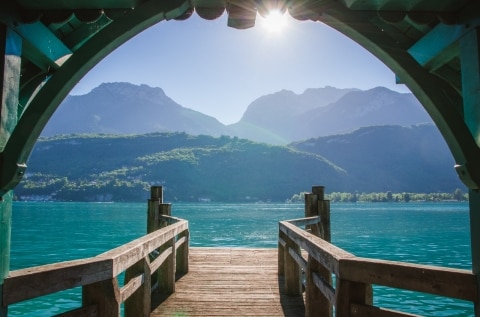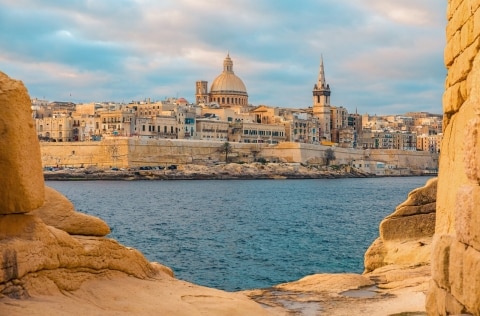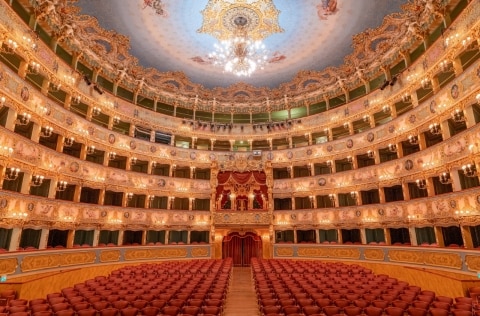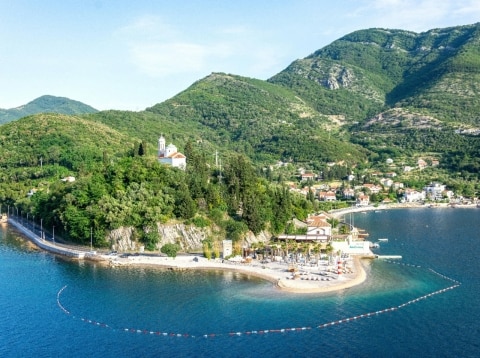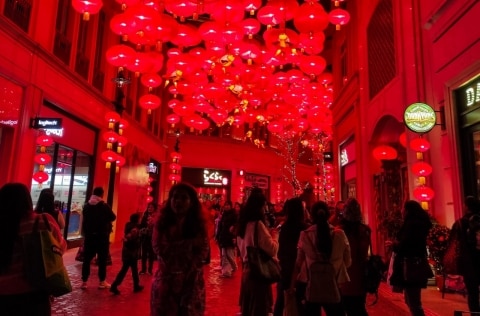23 of the Most Magical Towns in Italy
Italy is renowned for its atmospheric towns and cities. From stately palazzos to fresco-strewn churches, the country’s many borghi (“villages”) are living museums, and many have the nod of UNESCO to prove it – Italy is home to the greatest number of World Heritage Sites on Earth. From the coastal charm of Amalfi to the alp-ringed north, here are the most beautiful towns in Italy to include on your itinerary.

Image credit: Alamy
Monterosso al Mare
1/24You’ve probably seen Monterosso al Mare’s coastline before: Bagni Eden, the beach studded by orange and green parasols is perfect postcard fodder. The town is just one in the string of La Spezia’s renowned Cinque Terre coast, often tackled by visitors by a breezy coastal hike. The route from Monterosso to the next town across – Vernazza – is particularly popular (and especially wonderful when you begin it with the sunrise and the smell of fresh chocolate-stuffed cornetti).
Image credit: Unsplash
Limone sul Garda
2/24Tracing the precipitous edge of northern Italy’s Lake Garda and firmly nestled in the mountains, Limone sul Garda’s position posed an accessibility challenge until just a few decades ago, helping the town retain its rustic charm. Although the village traditionally deals in lemon growing, its name is a derivative of the Latin limen, or border – which refers to its location near the region’s border.
Image credit: Alamy
San Gimignano
3/24An atmospheric walled city standing sentry above the Tuscan countryside, San Gimignano can be seen from kilometres away, thanks in part to its clusters of towers that pierce the sky above it. There are 14 remaining medieval towers and a charming central plaza, Piazza della Cisterna, where visitors usually sprawl in the sun with a gelato in hand.
Image credit: Alamy
Castelluccio di Norcia
4/24Crowning the apex of a gloriously green hill in the Apennine Mountains, the village of Castellucio can be reached only by tackling a swerving route up to the summit. With a historical centre dating back to the 13th century and a setting of undulating hills and wide plains blanketed by blood red poppies and lentil flowers, this town – with a permanent population of just eight – is a hidden Umbrian gem.
Image credit: Alamy
Cefalù
5/24Pop a pin in the middle of the northern Sicilian coast and you’ll find Cefalù, a place that seems to float on its glittering ocean edges. Known for its cinematic beauty (immortalised in the classic heartbreaker Cinema Paradiso), the heart of the town is the imposing Cattedrale di Cefalù, a sand-coloured UNESCO World Heritage listed church built in 1136.
Image credit: Alamy
Praiano
6/24Clinging to a cliffside between the tourist-magnet towns of Positano and Amalfi, oceanside Praiano seems to defy gravity. Its most spectacular feature is its vantage point, and the views seen from various perches throughout the town are spectacular; with some reaching as far as the tiny isle of Capri, across the mist-blue Tyrrhenian Sea.
Image credit: Alamy
Trieste
7/24So far north-east it’s just a few kilometres shy of not being Italy at all, Trieste is a port city in the Friuli Venezia Giulia region near the Slovenian border along the Adriatic. The city’s cuisine is a delicious meeting of its surrounding influences, with everything from fresh seafood to hearty and warming Austro-Hungarian sausage stews and strudels.
Image credit: Alamy
Monte Isola
8/24With a landmass of just 450 hectares, you might think there isn’t a lot to discover on Monte Isola, an island in Brescia’s Lake Iseo. On the contrary: this diminutive islet has a wealth of walking trails, authentic restaurants and hamlets of narrow streets and traditional houses with terracotta-tiled roofs in its tiny towns such as Peschiera and Siviano.
Image credit: Alamy
Bologna
9/24Yes, you can draw a line between this vibrant town in northern Italy and your favourite midweek meal. The origins of “spag bol” connect to Imola, a town 45 minutes west of Bologna by car, which historians agree is the birthplace of tagliatelle al ragù or, as we’ve come to know (a form of) it, spaghetti bolognese. Needless to say, you’ll eat incredibly well during a visit here – the city is known for its diverse and delicious cuisine.
Image credit: Alamy
Modena
10/24It’s little surprise that a town in the region that founded parmigiano, prosciutto and ragù has an outstanding dining scene. Two whole episodes of the uber-popular Netflix show, Master of None, centred on the cobbled city, with a flood of featured eateries from the stand-out sandwich shop Bar Schiavoni to the authentic salumeria-slash-restaurant Hosteria Giusti. Michelin-starred restaurant Osteria Francescana, fronted by maverick chef Massimo Bottura and featured in another Netflix hit, Chef’s Table, also resides here.
Verona
11/24The streets are paved in marble, there’s a picturesque river carving a path astride it and, at its heart, there’s a staggering central Roman amphitheatre. This is Verona, the almost impossibly pretty Italian city where one of history’s most ill-fated love stories is set. The city is much more than just inspiration for Shakespeare, however – it also houses Europe’s oldest library, Biblioteca Capitolare, a dizzyingly ornate theatre in the 18th-century Teatro Filarmonico and a restored funicular service that delivers impressive views over the whole riverside town.
Siena
12/24Art lovers will adore Siena, a labyrinthe Tuscan city that hides exquisite work dating back to the 14th century in its many museums, churches and historic buildings. The city’s Duomo is a must visit, with its monochromatic stacks of striped black and white marble reaching into neck-craning distance, with walls of frescoes and stained-glass windows.
Image credit: Alamy
Orta San Giulio
13/24Built on a hook-like peninsula jutting into Lake Orta near the Italian-Swiss border, this lovely little village of Orta San Giulio is a place of flower-fronted houses and woodland surrounds. Across the water is a little gem you’d be forgiven for mistaking for Slovenia’s Bled Island: Isola San Giulio, home to a Benedictine monastery dating back to the 4th century, reachable by a five-minute water taxi journey.
Image credit: Unsplash
Chioggia
14/24Venice isn’t the only Italian town that’s striped by picturesque canals. Chioggia, in the southern bend of the Venetian lagoon, is known as “Little Venice” for its architectural similarities to the region’s famed capital. It has the same elegant palazzi, quiet canals and buzzy little markets without one key element: the notorious crowds of visitors.
Image credit: Alamy
Mantua
15/24Strewn with stately, grand buildings and enveloped by calm, wide lakes, tranquil Mantua is a lovely UNESCO World Heritage city with an abundance of Renaissance-era architecture. Una passeggiata (Italian for “stroll”) is practically a non-negotiable here, especially along the tree-shaded river banks and under the soaring arch of Basilica di Sant’Andrea, the city’s 15th-century church.
Image credit: Alamy
Lecce
16/24Firmly planted in the “heel” of the country’s geographical boot, Lecce is a mesmerising hive of both modern activity and staggering history. Its streets are lined with beautiful baroque buildings, old mansions with wrought-iron balconies and, amidst it all, crumbling Roman ruins, hinting at its past. The town’s cuisine is also known for its harnessing of local and seasonal produce – especially the spoils from the nearby Ionian Sea.
Anterselva di Mezzo
17/24Is it Italy or is it Austria? From its pristine alpine setting, it’s hard to discern the true location of Anterselva di Mezzo, or Antholz-Mittertal to the Austrians, by sight alone. Just 20 kilometres from the Austrian border, it’s definitively Italian; but its little wooden chalet houses have the feel of its neighbour. Although the town has just 700 permanent residents, it’s the most populous of the surrounding valley – which speaks to how peaceful this place can be.
Image credit: Alamy
Pitigliano
18/24Carved from volcanic cliffs rising up out of green, rolling fields, Pitigliano is an impressive architectural (and archeological) wonder, right in the heart of Tuscany. Remains identified as Bronze, Copper and Neolithic in their origins confirms the age of this fascinating city; visitors these days can expect to find streets of charming homes and pretty boutiques, many stocking bottles of the region’s speciality grape (trebbiano Toscano).
Image credit: Alamy
Volterra
19/24The walled city of Volterra, about an hour and a half from Florence, seems frozen in time. Its medieval architecture is perfectly preserved, from its narrow streets and stone-fronted homes. The history of the city stretches back much further however; parts of the city’s Etruscan walls from the 3rd and 4th century BC are still intact in places.
Alberobello
20/24Puglia’s emblematic conically-roofed houses are best admired in the cobbled town of Alberobello, less than an hour’s drive south-east of Bari. The city’s best area to see trulli, as these unique limestone houses with conical roofs are known, is Rione Monti, where there are over 1000 lining the streets. Want a closer look? Many of these traditional homes are available to rent, while some have been turned into boutique hotels.
Image credit: Alamy
Brescia
21/24As one of two of Italy’s Capitals of Culture for 2023, Brescia is about to have its moment in the sun. It should've already been basking in it for all its beauty is concerned: a well-planned wander around the historic centre can deliver glimpses of everything from 1st century Roman ruins to elegant coffee houses and grand palazzi from the Renaissance.
Image credit: Alamy
Bolzano
22/24The mountain town of Bolzano has only been part of Italy post-World War II; its unique position astride the Austrian border in the foothills of the staggering Dolomites makes it a unique melting pot of Italian, Austrian and German cultures. Many visitors travel here on their way to Lake Carezza – a half-hour drive south- east – a mountain lake of gemstone shades ringed by pine forests and craggy alpine peaks.
Image credit: Alamy
Syracuse
23/24In Sicily’s south-east corner, Syracuse catches an Ionian breeze from its coastal position. Once the biggest city of the ancient world, Syracuse had its heyday in 734BC, as its ancient and wonderfully preserved architecture will attest. These days, it’s a modern city with all of Italy’s renowned charms: lively cafes, a picturesque Duomo and a seafood-flecked local cuisine to boot.






